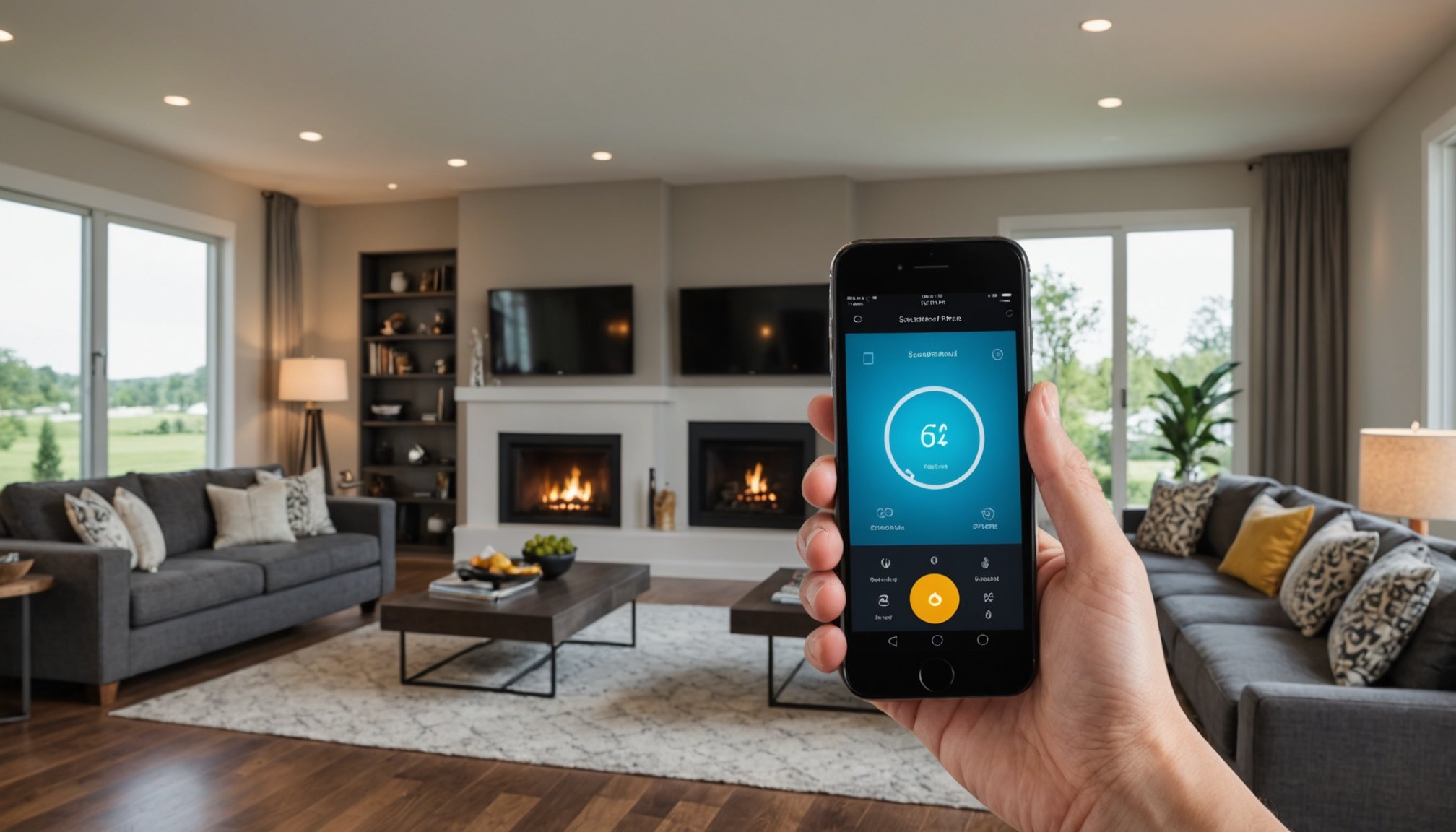Understanding Smart Home Technologies
Smart home technologies are transforming our living spaces, making them more intuitive and responsive. Smart home devices come in many forms, each designed to enhance convenience and efficiency. These range from voice-activated assistants like Amazon Echo to smart thermostats that adjust temperatures based on your preferences.
Home Automation Technologies play a crucial role in connecting these devices for seamless operation. Among the popular choices are Zigbee, Z-Wave, and Wi-Fi. Zigbee and Z-Wave are wireless communication protocols that allow devices to interconnect within a smart home system. Both offer low power consumption, but Z-Wave is known for greater range and reliability due to its dedicated frequency band, whereas Zigbee supports a larger number of simultaneous devices.
In the same genre : Unlocking remote desktop success: essential smartphone strategies for effortless connectivity
Wi-Fi, meanwhile, is the most common technology, enabling high-speed Internet connection in homes, thus powering various smart gadgets effortlessly. While Wi-Fi offers high-speed data transfer, it consumes more energy than Zigbee and Z-Wave.
Integrating these smart devices into everyday life can yield numerous benefits. Imagine your home adapting to your lifestyle — lights turn on as you enter a room, security systems alert you in case of an emergency, and appliances work at optimal times. This not only creates a more personal and convenient living space but can lead to energy savings and improved home security.
Topic to read : Enhancing smart home security: cutting-edge smartphone integration strategies you must explore
Setting Up Your Smart Home
Embarking on a Smart Home Setup can transform your living space, providing convenience and efficiency. The journey to a connected home involves several stages, each critical for seamless Device Integration.
Initial Configuration Steps
Begin by preparing your home environment. Evaluate the layout and determine where smart devices will be most effective. Identify compatible products to ensure they can communicate effortlessly with one another. Create a checklist to track your progress and save time.
Connecting Devices to the Network
To achieve smooth device integration, connect each smart gadget to your Wi-Fi network. Ensure your router is centrally located to optimize signal strength. Use the specific instructions provided by each manufacturer, as different devices may require unique setup processes. Remember, maintaining a secure network is crucial—set strong passwords and update them regularly.
App Installation and Account Creation
Once network connections are established, download the necessary mobile apps that correspond with your devices. Most smart home systems offer a dedicated app for easy management and control. These apps often require creating an account or signing in with existing credentials. This process typically involves verifying identity, securing information, and linking devices to your profile.
Through these steps, integrating technology into your home becomes a streamlined and exciting endeavour, paving the path towards a sophisticated Smart Home Setup.
Selecting the Right Smartphone Apps
In the rapidly evolving world of smart home technology, selecting the appropriate smart home apps becomes crucial. Various apps like Google Home, Apple HomeKit, and Amazon Alexa dominate the landscape, each offering unique features tailored to different user experiences.
Google Home is renowned for its robust integration with Google services. It offers a seamless experience for users heavily invested in the Google ecosystem, allowing for easy control of connected devices. Its intuitive interface supports a variety of smart devices, facilitating efficient home automation.
Conversely, Apple HomeKit emphasizes privacy and security, appealing to users valuing these aspects. Its ecosystem provides a smoother connection for Apple device users, with Siri support enhancing usability.
Amazon Alexa stands out for voice control prowess. Its extensive compatibility with third-party devices renders it a versatile choice for users seeking comprehensive home automation. The app’s adaptability and extensive features cater to diverse user requirements.
When choosing the right app, evaluate specific needs. For those prioritizing privacy, Apple HomeKit is favourable. If voice control is essential, Amazon Alexa might be ideal. Cross-platform functionality lovers will appreciate Google Home. Ultimately, consider your device ecosystem and priorities to ensure seamless integration and ease of use in your smart home.
Best Practices for Smart Home Automation
Ensuring efficient control of your smart home enhances convenience and efficiency. Let’s delve into some effective smart home automation tips.
Creating Automation Routines
Developing well-planned automation routines can transform your daily life. Begin by identifying repetitive tasks, such as turning off lights. Set devices to activate automatically when you arrive home, through geofencing or time-based triggers. Use conditional statements (if-then scenarios) to handle events like playing music when you enter a room. Ensuring compatibility between devices will lead to smoother operation and fewer hiccups in your routines.
Voice Control Integration
Integrating voice control can significantly enhance the accessibility of your smart home. Popular assistants like Alexa, Google Assistant, or Siri provide hands-free operation, making life more convenient. Simply by voicing commands you can adjust lighting, thermostat settings, or even lock doors. This feature is particularly helpful for people with mobility challenges, offering a seamless user experience. The key is to ensure all compatible devices are connected and response times are optimized by placing devices strategically.
Scheduled Actions and Notifications
Setting up scheduled actions and notifications helps maintain an orderly home. Automate tasks like watering plants every morning or sending alerts if windows are left open. Establish a schedule for appliances to minimize electricity use during peak hours. Integrate notifications into your routine to stay informed about unusual activities, maintaining security and peace of mind. Use the device’s apps to adjust settings easily, ensuring you make the most of your smart home automation system.
Troubleshooting Common Issues
When integrating smart devices into your home, common problems can sometimes arise, leaving you puzzled. These device issues can range from connectivity problems to software glitches. Recognising these hiccups is the first step to resolve them effectively. Let’s delve into some practical smart home troubleshooting techniques to help you navigate these challenges effortlessly.
Common Problems
A typical issue is the connectivity between devices and your network. Ensure your router supports the necessary protocols, and check if the device is within range. Another frequent problem is outdated firmware, which can often be remedied by ensuring your device’s software is up-to-date.
Step-by-Step Troubleshooting
-
Verify Connectivity: Start by checking the network settings on both your router and device. Confirm that they are compatible in terms of frequency (2.4GHz vs 5GHz).
-
Firmware Updates: Regularly update the device firmware. Access the manufacturer’s app or website for the latest downloads and installation instructions.
-
Reboot and Reset: A simple reboot or factory reset often resolves many unexplained issues. Ensure you backup settings if possible.
When to Seek Professional Help
If troubleshooting doesn’t resolve your issue, it may be time to seek professional help. Consider this option when persistent problems continue or when dealing with complex systems that require detailed network configurations. Knowing when to opt for DIY solutions versus professional intervention can save time and frustration.
Optimizing Home Automation for Convenience
Creating a seamless smart home experience hinges on optimizing home automation systems for ultimate convenience. One key aspect of this optimization is improving the user experience. By focusing on the usability and integration of devices, the impact of smart technology on daily life is significantly enhanced.
Enhancing Device Interconnectivity
For a smooth smart home setup, ensuring that devices can communicate effectively is essential. Device interconnectivity allows for a more synchronized environment, where systems like lighting, heating, and security can work in unison. Using platforms that support multiple protocols ensures that various gadgets can interoperate without any hassle. This creates a robust network, minimizing disruptions to the user experience and enhancing the convenience of managing home tasks.
Customizations for Individual Preferences
Tailoring automation settings to personal preferences plays a crucial role in maximizing smart home optimization. By customizing devices to align with specific routines, individuals can enjoy a more personalized living experience. Options to adjust settings according to time of day, activity patterns, or even mood can greatly enhance satisfaction. Smart systems that learn and adapt to your habits promise a user-centric approach to home automation.
Security Measures in Smart Automation
Integrating robust security measures is vital in any smart home. Implementing practices such as encrypting network communications and using two-factor authentication helps protect your home from intrusions. Regular updates and awareness campaigns further mitigate risks, ensuring the convenience of a safe and secure smart home environment.






